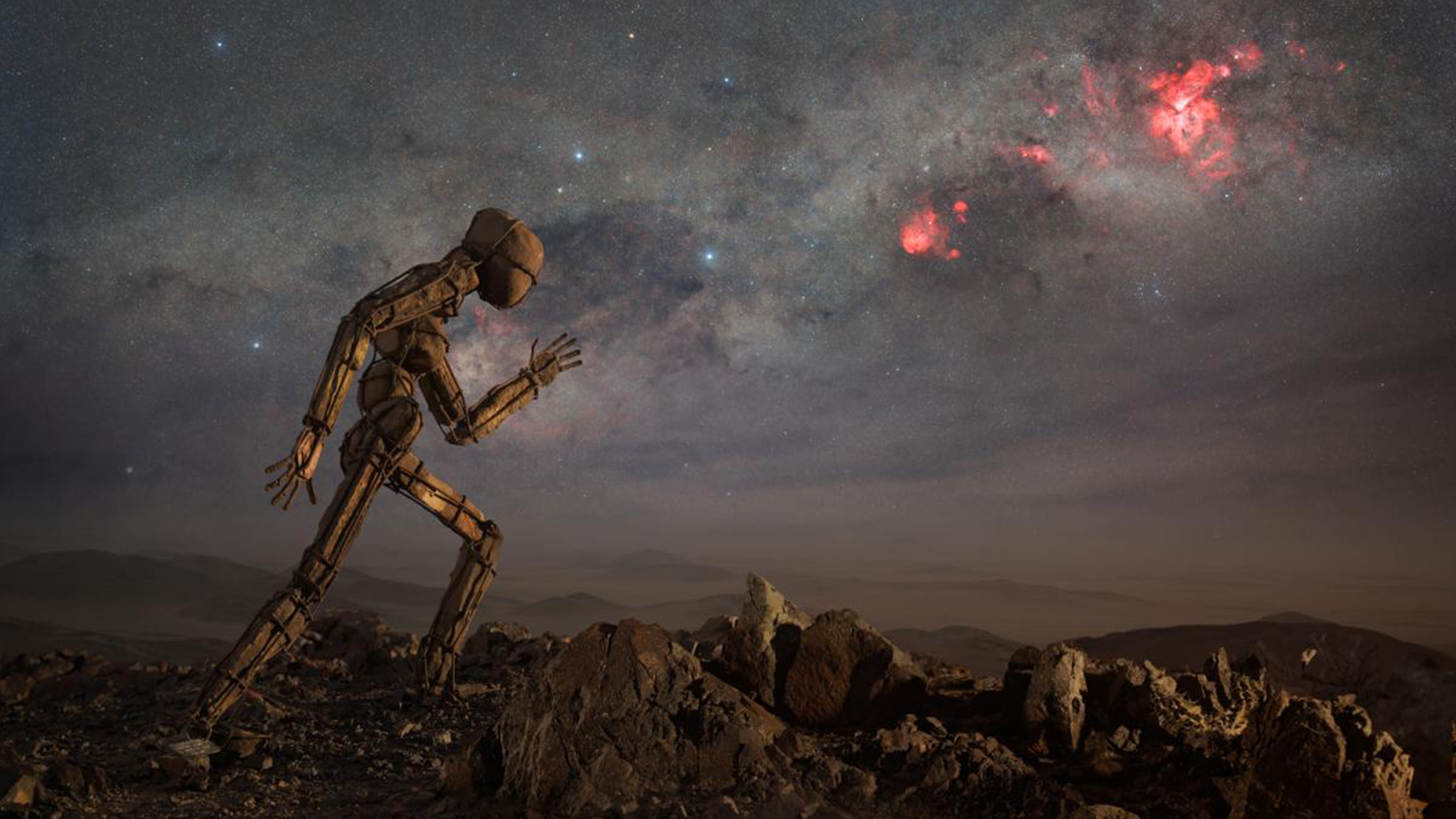Every year, the Royal Museums Greenwich conducts its Astronomy Photographer of the Year contest. Hundreds of entries flood in from around the world, and the museum’s panel of judges selects winning images from categories as diverse as Auroras, Galaxies, Our Moon, Our Sun, People and Space, and Skyscapes.
While this year’s grand prize winners have yet to be announced, the shortlisted finalists are certainly worthy of a gander. So sit back, and prepare to have your eyeballs transported out into the shockingly beautiful emptiness of the great beyond.
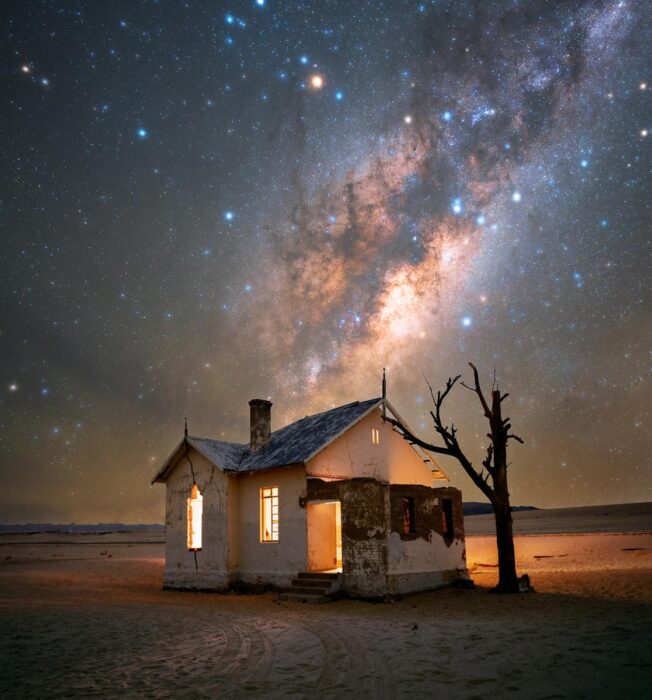
Abandoned House, People and Space Category Photo: Stefan Liebermann/Astronomy Photographer of the Year 2024
Some software, a ramshackle house, and clear desert air were all it took for photographer Stefan Liebermann to create this incredible image.
“In the middle of the Namib Desert, you can find an abandoned house and, right above it, the Milky Way rises. I put some lights in the house, set up my star tracker, and seized the opportunity,” the photographer told Royal Museums Greenwich. “Through a veil of clouds, halos around the stars created a dream-like effect.”
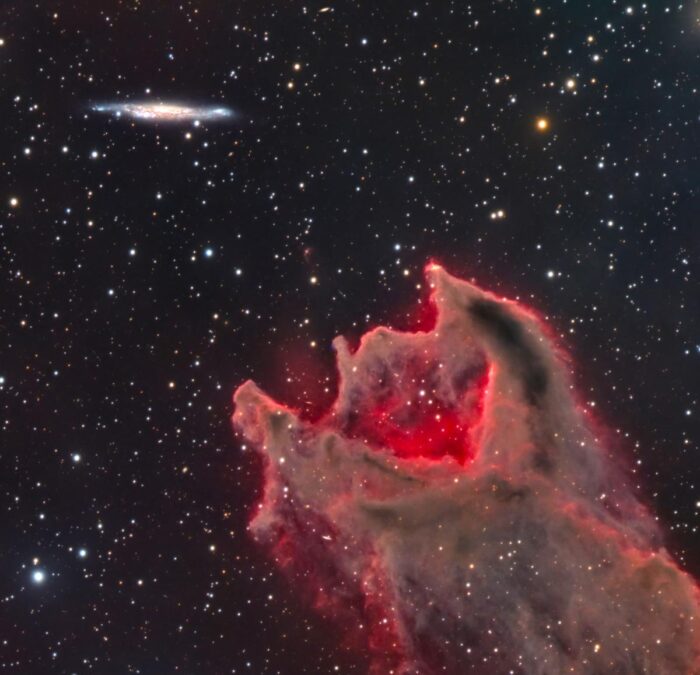
The Galaxy Devourer, Galaxies category. Photo: Alessandro Ravagnin et al./Astronomy Photographer of the Year 2024
Group effort
This image was generated by a team from El Sauce Observatory, Río Hurtado, Chile. “Is this the cosmic sandworm of Arrakis from Dune or the terrifying Graboid from the film Tremors,” the group asked cheekily.
The ‘head’ of the galactic worm has dimensions of about 1.5 light-years, while the offshoot that follows the head, and which is directed in the opposite direction with respect to the rest of the famous Vela supernova, is about eight light-years long.
“This image is the result of the work of a team of astrophotographers,” they explained. “We joined forces to rent the Newtonian 500mm telescope from Chilescope service, processed the raw files, voted as a group for the best images, and merged them in PixelMath.
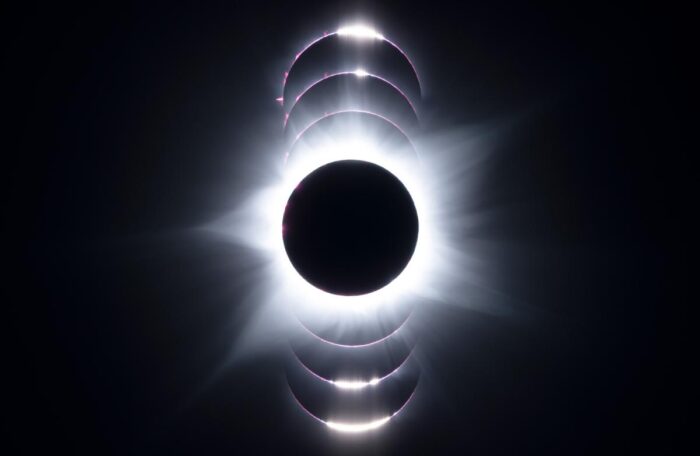
Total Solar Eclipse, Our Sun category. Photo: Gwenael Blanck, Astronomy Photographer of the Year 2024
“A total solar eclipse is one of the most beautiful spectacles nature can offer,” said Gwenael Blanck, the mastermind behind this incredible photo collage. “Everyone should experience it at least once in their lifetime. In April 2023, I went to Australia for 62 seconds of totality. It seems short, but it was worth every penny…Pictures don’t do justice to this wonder.
Blanck combined no less than 13 images in Photoshop to create this mandala-like final result. Classic eclipse phenomena like the pink chromosphere, prominences, and Baily’s beads are all evident. It’s a strangely peaceful outcome from such a moving solar event.

Martian Dementors, Annie Maunder Prize for Image Innovation. Photo: Leonardo Di Maggio, Astronomy Photographer of the Year 2024
A giant centipede?
Leonardo Di Maggio used imagery from the Mars Reconnaissance Orbiter missions to create this abstract landscape image.
“I cropped into a section of the image and tried to bring up the clarity, as well as the shadows, to give the impression of legs of living creatures while attempting to keep the overall dark feeling of the photograph,” the artist explained.
The result is this haunting, almost organic piece of abstract art that definitely gives “spooky and atmospheric” vibes.
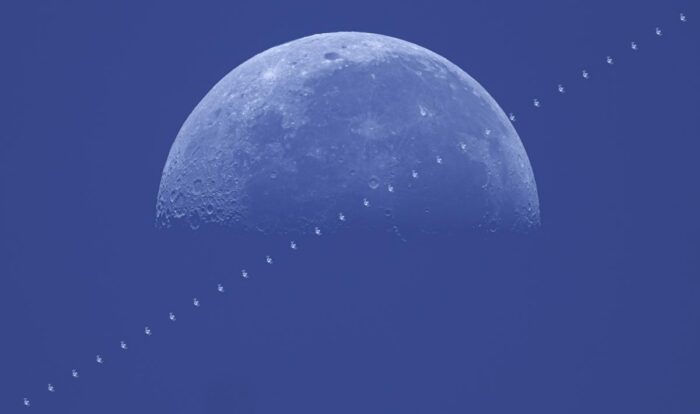
International Space Station Daytime Moon Transit, Our Moon category. Photo: Kelvin Hennessy, Astronomy Photographer of the Year 2024
Sometimes, it seems like there’s an app for everything. Photographer Kelvin Hennessy certainly made good use of this truism by using “Ed Morana’s ISS Transit Prediction app to find a suitable transit path.” But that was the easy part, the photographer explained. The perils of urban life were the hard part. More technology to the rescue!
“Finding a suitable shooting location in a city was the most difficult part of the shoot. I used Google Earth and Google Street view to look for a suitable candidate with clear skies and parking along the very narrow transit corridor,” Hennessy said.
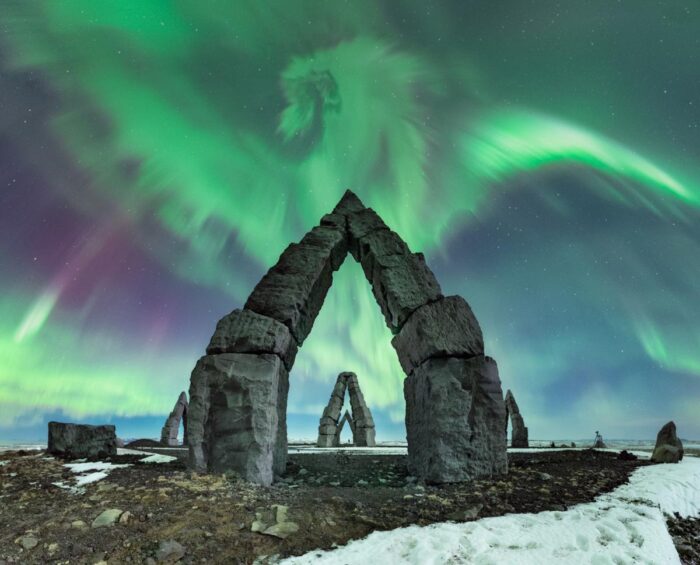
Arctic Dragon, Aurora category. Photo: Carina Letelier Baeza, Astronomy Photographer of the Year 2024
Arctic dragon
A solar event, a little bit of luck, and rich Icelandic heritage combined to give Carina Letelier Baeza this astounding image she titled Arctic Dragon.
“This aurora panorama, which looks like a big dragon over the rock pyramids, was the result of a geomagnetic storm…generated by a coronal mass ejection earlier that day,” she explained. “The result was intense red-greenish aurorae throughout the whole night. The location of the photo is the Arctic Henge, which has a rich cultural meaning for Icelanders and was the only place in Iceland with clear skies that night.”
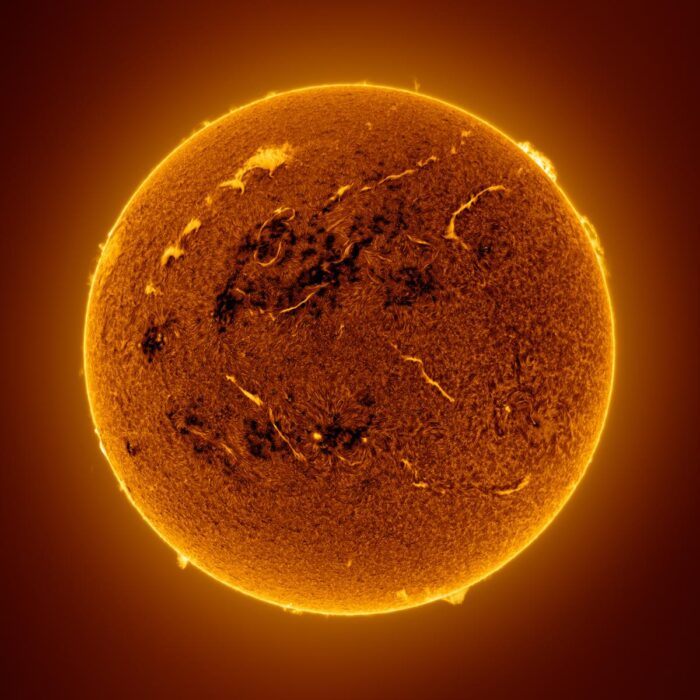
A Whale Sailing the Sun, Our Sun category. Photo: Eduardo Schaberger Poupaeu
Have you ever seen a whale swimming the solar seas? Eduardo Schaberger Poupaeu spied the whale-like shape (upper left) while observing the sun through his telescope.
“It was truly astonishing to witness the singularity of this imposing figure. This plasma structure not only reveals solar dynamics but also underscores the fascinating ability of our minds to perceive recognizable shapes in abstract patterns, a phenomenon known as pareidolia,” Poupaeu shared.
The stargazer used software to stack 100 frames of the video he captured through his telescope, then added color.
You can see more of the Photographer of the Year 2024 shortlist here.
